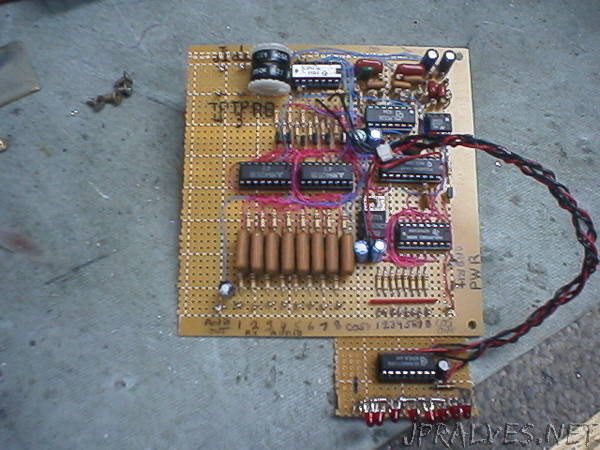
“One of the often-overlooked means of improving the coverage of an amateur radio repeater is the use of multiple receivers in a voting configuration. It’s often the case that a user can hear the repeater fine, but for whatever reason cannot get back into it - particularly if they are using a portable radio (a handie-talkie) and a compromised antenna, such as a rubber duck antenna. By extending the reach of the receive portion of the system with several geographically disparate receivers on the same frequency the effective, usable coverage can be increased without the need to have a linked repeater system - which may require additional frequencies - and it reduces the necessity of the user to switch between linked repeaters to maintain coverage.
While this article describes a specific 8-channel voting system, it should contain enough information to be able to implement a similar voting controller using other hardware.
Why a voter?
Why improve the receiver coverage without a commensurate improvement in transmitter coverage? This makes sense if the repeater is an “alligator” - that is, “big mouth, small ears” where it can be heard over a wider area than it is often possible to get into it - something that is particularly true for users of handie-talkies - especially when the repeater itself may be located at a “busy” RF site with a high noise floor that limits the sensitivity of co-located receivers.
The use of “extra” receivers also takes into account an important property related to how hams actually use repeaters: When the signal from the repeater is weak, the user will jockey about to find a “hot spot”, but when transmitting to the repeater there is no obvious means of feedback to help that same user find reciprocal hot spot - which may or may not be in the same place as for the receive.
A more subtle problem with transmitting is that user naturally places the radio very close to their face which may not be conducive to the best transmitted signal to the repeater and it is the tendency for many people to “drop” their radios a bit, holding the antenna in a way other than vertical - something that often goes unnoticed because, while transmitting, they cannot know the quality of the signal making it to the repeater and adjust their position accordingly.”
